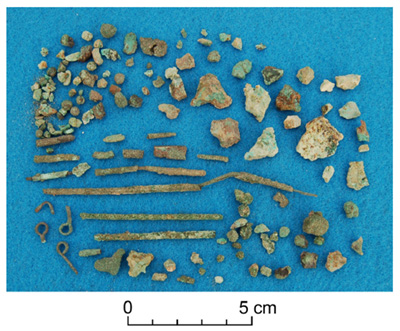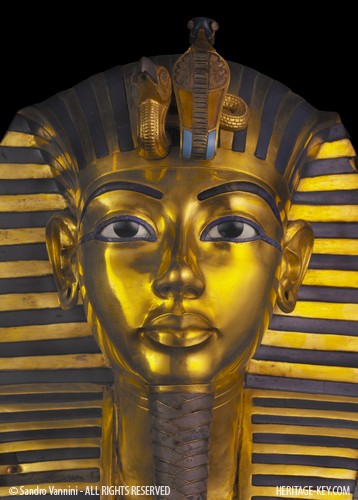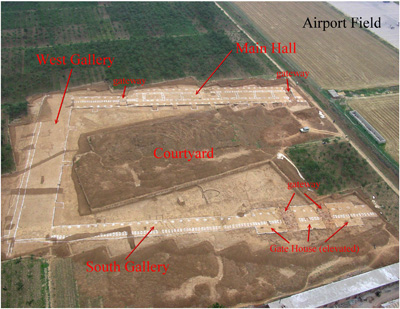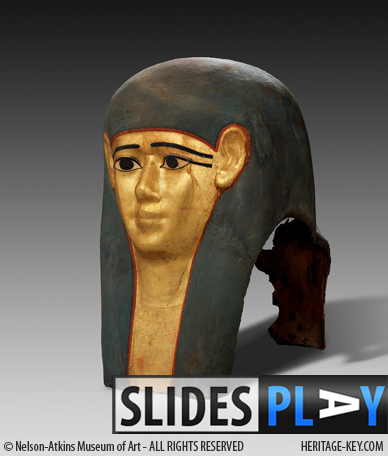Canadas largest museum has picked a curator from down under to lead them into the next decade. Janet Carding has been Assistant Director, Public Programs & Operations at the Australian Museum inSydney, since 2004. She also teaches the Museums and Galleries administration segment of the University of Sydneys Museum Studies program. She will be taking over as CEO and Director of the Royal Ontario Museum after William Thorsell, the museums current leader, retires in August. Like the ROM the Australian Museum has a collection that stretches into ancient times. In particular it has a large collection devoted to the aboriginalcultures…
-
-
A team of archaeologists has uncovered a 1,400 year old pyramid in Peru at a site called Huaca Colorada – a name meaning “coloured hill”. The pyramid was built by an ancient people called the Moche. It was flat at the top and a settlement was built around it that housed thousands of people. It was in use until around 1,200 years ago. Professor Edward Swenson, of the University of Toronto, led the team that made the discovery. “People walked over this thinking that it was just a big mountain where squatters lived,” he said. “I knew it was more…
-
While the golden kings exhibition has left Canada for southern climes, those in Vancouver will have an opportunity to learn more about him and more specifically how his artefacts reinforced his position as pharaoh. Professor Katja Goebs research looks at Egyptian pharaohs and the artefacts that cement their hold on power. Her most recent book Crowns in early Egyptian Funerary Literature: Royalty, Rebirth, and Destruction, examines the white and red crowns ofUpper and Lower Egypt. They possess a wide-ranging symbolism that transcends the terrestrial sphere to encompass the divine and the cosmos, death and rebirth, she wrote in the book…
-
In a matter of weeks, or even days, the Royal Ontario Museum, in Toronto Canada,will be announcing who their next CEO is going to be. I dont have any knowledge as to who it is, but, can certainly say that the new leader has an almost impossible act to follow. William Thorsell, the museums current leader, will be retiring in August. His ten year termat the museum was one of unprecedented growth. Under his leadership the ROM built an expansion that saw its Bloor Street frontage turned quite literally into a giant crystal. Collections that had been in storage from…
-
Nearly 4,600 years ago a third dynasty pharaoh named Snefru launched one of the greatest construction projects in human history. He decided, for reasons that are unknown to us, to build four pyramids scattered at different places across Egypt. He constructed two of them at Dashur (the Red and Bent pyramids), one at Meidum and another at a place called Seila. Together they used up more material than Khufus pyramid at Giza. Casing stones were used to give them a smooth appearance in other words make them into true pyramids.” This was the first time in Egyptian history that this…
-
Nearly 4,600 years ago a third dynasty pharaoh named Snefru launched one of the greatest construction projects in human history. He decided, for reasons that are unknown to us, to build four pyramids scattered at different places across Egypt. He constructed two of them at Dashur (the Red and Bent pyramids), one at Meidum and another at a place called Seila. Together they used up more material than Khufu’s pyramid at Giza. Casing stones were used to give them a smooth appearance – in other words make them into “true pyramids.” This was the first time in Egyptian history that this was done.…
-
Its confirmed the Terracotta Warriors show will be opening on June 26at the RoyalOntario Museum, inToronto rightat the startof a G20 summit. It will be the largest Terracotta Warriors show ever to hit North America. Featuring 250 artefacts, including 16 human terracotta figures. While the Terracotta Warriors show will be opening many other venues will be closing. The CN Tower will be closed, the University of Toronto campus (which surrounds the museum) will be shut down and even the Toronto Blue Jays baseball team have moved their weekend home games to Philadelphia. A security cordon will also be in place…
-
On June 26the Terracotta Warriors will be coming to the Royal Ontario Museum in Toronto, Canada. Curated by the museums own Dr. Chen Shen,the showincludes 16 human terracotta figures, a terracotta horse and, yes, a terracotta dog (albeit from the Han period). In total there are about 250 artefacts -making it the largest warriors show ever to come to North America. Accompanyingtheexhibitionwill be a lecture series, the details of which the museum has just announced. Therewill be14 lectures in total, allof whichstart at7pm in the Eaton theatre, inside the museum itself. The price for one lecture is $28, going down…
-
The Shang Dynasty of Ancient China is known for its divinations, oracle bone inscriptions and large urban centres. Now archaeologists have a new mystery to ponder. A team of researchers excavating a 3,300 year old Shang Dynasty palace-temple complex at the ancient city of Huanbei have discovered that it was burned down after only 50 years of use. Making it more enticing is that it wasnt burnt down by an invasion force, but by the citys own rulers. They stripped the complex of all its goods before committing the act. The only thing they left behind were human sacrifices at…
-
The Nelson-Atkins Museum of Art in Kansas City has just opened a new Egyptian gallery that features the coffin, cartonnage and shabtis of an Egyptian noblewoman who died around 2,300 years ago. Her name was Meretites which means beloved by her father. Her funerary artefacts date to some point between 380-250 BC. This date means that she may well have been contemporaneous with Alexander the Great and witness to a remarkable period of Egyptian history. Alexander the Great advanced into Egypt in 332 BC, taking over power from the Persians. He would go on to conquer an empire that stretched…






